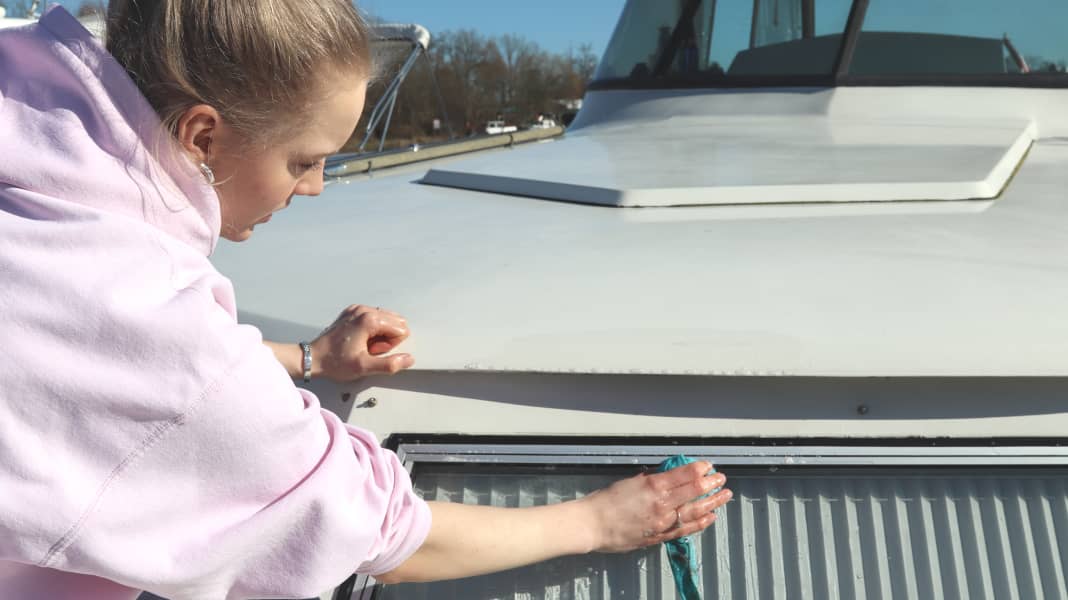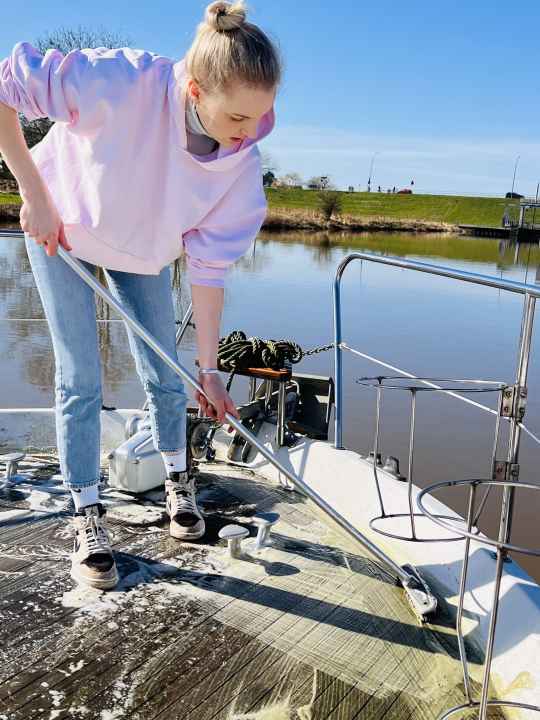
This article is part of the special season start. All parts:
- Cast off - how to get the new season off to a smooth start
- Checklist: Fit for the new season - the checklist
- Cleaning, polishing and care
- The best care and cleaning products for boats
- Last-minute tips from the experts at Pantaenius for the start of spring
- Checklist for the boat trailer
- The best tips from the Pantaenius specialist
- Changing the oil in a boat engine - here's how!
- Special pumps - changing oil in no time at all
- To check the cooling circuit
- How to renew the antifouling
- Boat equipment - the more, the better
Contents of this article:
It's time to get out of the armchair, spring is in the air. Hibernation is over and the boat needs to be ready for the new season on the water. Precise planning in advance minimises the time you have to spend later. For example, with a checklist that you tick off point by point, comparable to the work of a pilot before take-off. The following list can certainly be expanded and it is worthwhile to keep it up over the years. It only serves as a guide because the work varies depending on the size of the boat. However, with the help of the list provided, every skipper can put together their own checklist to suit their boat.
Exterior
It is all too easy for many skippers to forget to give the winter tarpaulin the necessary attention to ensure that it is still fit for winter use the following autumn.
The first thing to do is to clean the tarpaulin and lay it out to dry before folding it up. Only then should you check it:
- Hull for damage
- Plastic and/or paint corrections (wait for correct outside temperatures)
- Replace fittings, including anodes, corroded material
- Function and safety of bathing platform and ladder
- Washing, waxing, applying antifouling
On deck
Particular attention should be paid to the anchor harness mimic, as it literally becomes a lifeline in emergency situations (engine fails). This is also an opportunity to renew or reapply depth markings on the chain or line with paint or tape. Further checks:
- Anchor chain and line: replace corroded chain parts such as swivel shackles, as well as frayed or damaged lines
- Grease anchor windlass
- Railing supports and wires, hand rails
- Tightness of all windows and hatches
- Clean tarpaulin, check for leaks, re-impregnate if necessary
- Windscreen wiper function, replace wiper blades
- davits, manoeuvrability of pulleys, lines and shackles
- Check and clean the valves and drain openings of the cockpit self-draining system
- Replace worn lines and fenders
- Repaint wooden parts if necessary

Inside
Nobody who locks up their house for five or six months expects it to be in the same good condition when they return as when they left. Especially not with a boat, because moisture and a lack of ventilation leave clear traces. The most important and first spring-cleaning measures are airing, cleaning and vacuuming upholstery and mattresses, which should be taken outside at the first warm sunlight. Airing and cleaning is also the first boat duty for everything that was closed, such as cupboards, storage spaces and lockers. Also on the list:
- Clean bilge, if necessary: repaint
- Hand and/or electric bilge pump function
- Completely check the gas system - if present - including the lines, connections and outboard drain opening
- Cooker and refrigerator function
- Kitchen and crockery equipment, replace parts if necessary
- Dispose of last year's tinned food
- Wash pillowcases, curtains and drapes
- Clean the carpet, if present
- Fresh water system, including tank with sensors and display, replace filter and pump seal if necessary
- Dirty water tank system including pump
- WC function with pump and valves, replace defective seals
- Heating function
Electrics
Today, the electrical system on board plays the most important role alongside the function of the engines. Without them, nothing runs, not even the engine starts. That's why the most thorough checks are carried out on the electrics. Without mentioning it separately for each individual test point: Always spray connections and joints with an anti-corrosion spray such as WD 40. And what are the details?
- Position lamps, replace bulbs with approved ones if necessary
- Battery charging and connections, grease terminals
- Blower function for built-in petrol engines
- Replace corroded fuses
- Replace dry batteries in electronic devices, watches and torches
- Function of all switches
- Lighting, add replacement bulbs if necessary
- Built-in radio plus loudspeaker
- Function of all display instruments for navigation and supply
- Land connection
Security
The best safety on board is good seamanship on the part of the crew. This presupposes that the skipper is aware of his responsibility and instructs fellow travellers accordingly on what to do in an emergency. In any case, the most important piece of equipment is a lifejacket (and instructions on how to use it) for every "passenger". And what else?
- Engine compartment fire extinguishing system
- Manual fire extinguishers, check maintenance interval
- Possibly replace emergency signals with an expiry date
- Check and supplement first aid kit
- Radio system
- Life raft or dinghy function
Motors
This is a chapter in itself and would go beyond the scope of this article, especially as there are major differences between built-in engines with their drive systems and outboards. As a rule, all relevant work should have already been carried out during winterisation. Incidentally, it is better to leave it to a specialist workshop.
General information on the start of the season
Don't forget to check all the paperwork. This includes proof of ownership, licences, insurance, operating instructions, workshop manuals and a list of important emergency telephone numbers.
- So that you can take the checklist with you on board, you will find the document here as a PDF download.
This article is part of the special season start. All parts:
- Cast off - how to get the new season off to a smooth start
- Checklist: Fit for the new season - the checklist
- Cleaning, polishing and care
- The best care and cleaning products for boats
- Last-minute tips from the experts at Pantaenius for the start of spring
- Checklist for the boat trailer
- The best tips from the Pantaenius specialist
- Changing the oil in a boat engine - here's how!
- Special pumps - changing oil in no time at all
- To check the cooling circuit
- How to renew the antifouling
- Boat equipment - the more, the better

